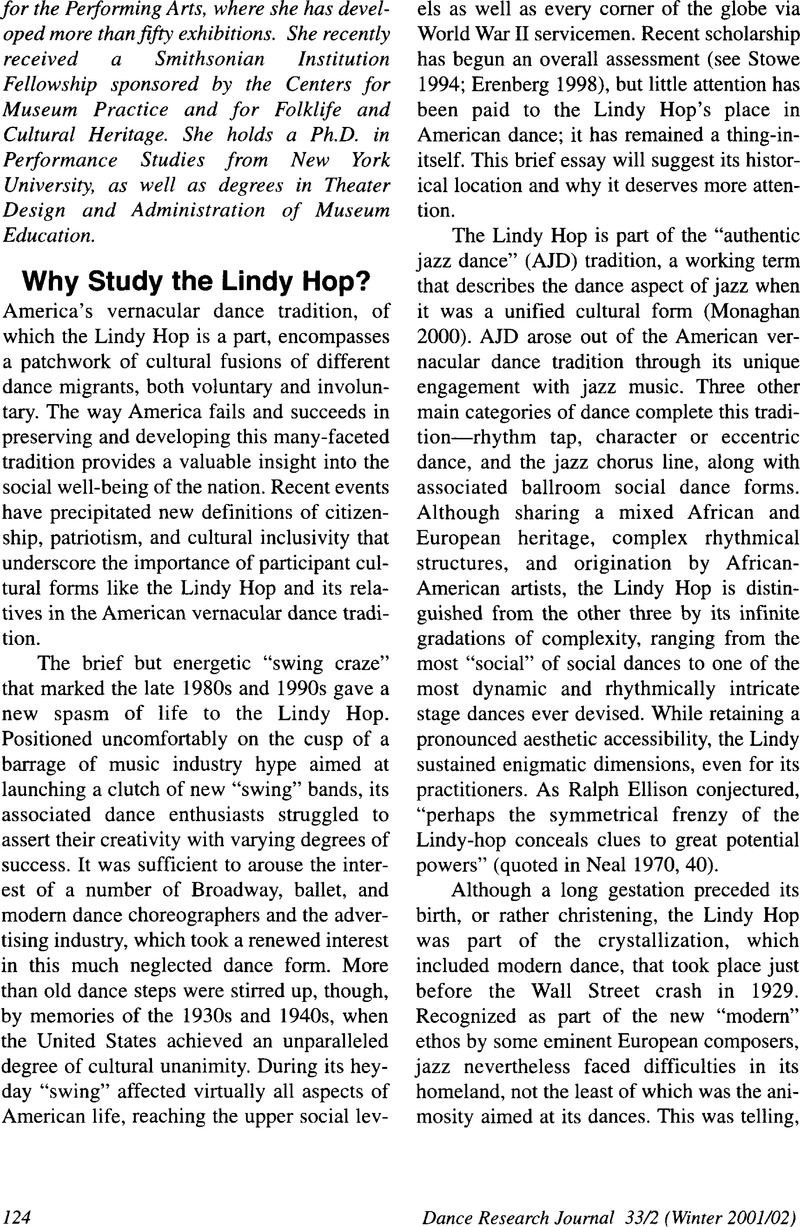Crossref Citations
This article has been cited by the following publications. This list is generated based on data provided by Crossref.
Callahan, Jamie L.
2005.
‘Speaking a secret language’: West Coast Swing as a community of practice of informal and incidental learners.
Research in Dance Education,
Vol. 6,
Issue. 1-2,
p.
3.
Brown, Tamara Lizette
2014.
Soul Thieves.
p.
201.
Thomas, Tamara
2019.
Making the Case for True Engagement with Jazz Dance.
Journal of Dance Education,
Vol. 19,
Issue. 3,
p.
98.
Unruh, Kendra
2020.
May we have this dance?: Cultural ownership of the Lindy Hop from the swing era to today.
Atlantic Studies,
Vol. 17,
Issue. 1,
p.
40.
Carlson, Emily
Saari, Pasi
Burger, Birgitta
and
Toiviainen, Petri
2020.
Dance to your own drum: Identification of musical genre and individual dancer from motion capture using machine learning.
Journal of New Music Research,
Vol. 49,
Issue. 2,
p.
162.
Domene, Pablo A.
and
Morley, Sheriden
2022.
Stepping into Salsa culture: an experiential account of engaging with a university non-credit dance programme.
Research in Dance Education,
Vol. 23,
Issue. 1,
p.
91.
Guo, Wen
Bie, Xiaoyu
Alameda-Pineda, Xavier
and
Moreno-Noguer, Francesc
2022.
Multi-Person Extreme Motion Prediction.
p.
13043.
Giacoman, Claudia
and
Torres, Rodrigo
2022.
Dance to resist: emotions and protest in Lindy Hop dancers during October 2019 Chilean rallies.
Canadian Journal of Latin American and Caribbean Studies / Revue canadienne des études latino-américaines et caraïbes,
Vol. 47,
Issue. 1,
p.
46.





